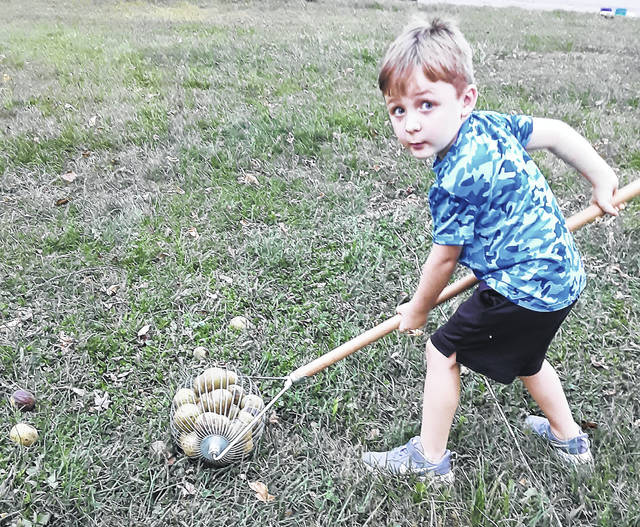
As wild black walnuts fall from the trees, local people literally could have “money laying on the ground,” according to walnut processor and retailer Hammons Black Walnuts of Stockton, Missouri.
Some are almost the size of a baseball and to most people they’re annoying, smell bad, and if a lawnmower hits one could become a missile that could take out a window or an automobile windshield.
However, according to the Hammons Black Walnuts, if gathered and taken to one of their hullers, they’ll pay 15 cents a pound once they’re hulled out.
The black walnut harvesting season is in full swing through early November, and the company said it had more than 200 hulling stations in 12 mid-western states, including Ohio, that will buy freshly-fallen black walnuts harvested by hand from thousands of people in rural areas.
The company said their hullers aren’t picky about the amount brought in by individuals, adding that it could be one five-gallon bucket, five feed sacks or a pickup truck load, adding that some serious harvesters come in with flat-bed trailers.
The Midwest is the only place in the world where black walnuts are collected and sold on a large scale, it said, making the green and sometimes inky black objects unique and special to rural communities like Hillsboro.
Hammons said its goal for this year’s harvest was 20 million pounds, with many hulling station operators reporting lots of black walnuts on trees, with nuts already falling.
“It’s money on the ground, jobs for the economy, and food for great recipes,” its website pointed out.
In this region, there is a trio of hullers who sub-contract with Hammons that are in easy driving distance of Highland County.
Frank Showalter’s hulling operation is located five and-a-half miles northeast of Greenfield on SR 138, between Lyndon and Waugh Road; Bryan Stapleton’s Lakeside Farm hulling station is off of SR 138 at Cope Road and Cowman Lane; and Marvin Keim’s huller is in the heart of Amish country on Tater Ridge Road off of SR 32, between Peebles and West Union.
As previously reported, Stapleton told The Times-Gazette that nothing about the walnut is wasted, and that after shipment from his hulling station, Hammons’ main processing facility in Stockton removes the nutmeat, and whatever is left over can be used for eco-friendly sandblasting.
He said that even the outer husk, which when it’s soft and black can be used for stain and inks, had a use for farmers as well.
“They take that husk and dry it out, and then when it’s scattered over a field. It can be used for fertilizer since it’s really high in nitrogen,” Stapleton said.
He also said there’s a value for the walnut husk that trappers use, since the strong aroma typical of the black walnut tends to mask any human scent that may be present on a trap.
The walnuts should be brought in as they’re found, he said, with no preparation necessary because the hulling machine removes the green outer husk.
“Even if they don’t have the green husk on them, or it’s turned black and all that’s left is the nut, bring them in,” he said.
Hammons said that black walnut buying will continue throughout October and into early November.
Reach Tim Colliver at 937-402-2571.


